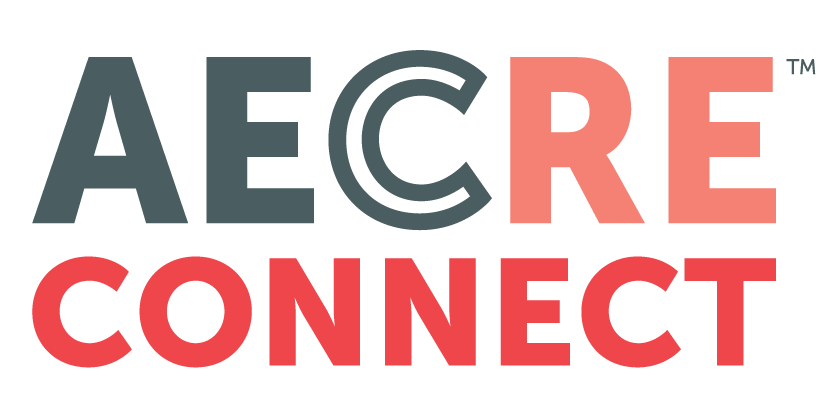Read the original article from ArizonaEconomy.com, a product of Elliott D. Pollack & Company, here.
With all that’s gone on in the last two weeks, it’s time for another attempt to bring together some of random thoughts. As for the election, it’s not really over until after January 5th . That’s the date the runoffs for two senate seats will occur in Georgia. The outcome will determine the control of the senate for the next two years. A Republican victory will create gridlock in Congress. It will make it difficult, perhaps impossible, for the Democrats to get through most of their platform. A Democratic sweep of the two seats will allow that platform to potentially move forward. The next month and a half will determine whether the Democratic party controls the presidency and all of Congress or whether a Republican controlled Senate will force compromise in policy-making over the next four years.
The stock market is clearly saying that there will be gridlock. And based on what happened to the market last Monday when the Pfizer/BioNTech vaccine for COVID-19 was announced, the seemingly unlikely possibility of the virus being stopped in its tracks has become a real possibility. A typical vaccine is considerably less effective than the 90% that this new vaccine promises.
There have been more than 40,000 people in the clinical trial. The speed at which the new vaccine has moved through the process is incredible compared to the normal process. But, obviously, this is not a normal situation. And many questions still linger. How safe is it in the long run? How does it work for at risk populations? Since it doesn’t stop people from getting the virus but simply causes patients to have milder cases, how it will affect transmission? Even if it does everything that people hope, how long will it take to get the vaccine both produced and distributed since the vaccine needs to be kept at minus 70 degrees to prevent spoilage prior to use? And what percent of the population will agree to be inoculated?
Despite all of the potential questions, it is a major change from the thought process about how this would end prior to this discovery. Instead of needing more and more testing and better therapeutics, this level of relief offered by the vaccine could be a real game changer in getting back to normal. It could be the miracle we had hoped for. Only time will tell.
That brings us back to the economy. Every time there is a spike in cases that creates more hype about the shutdowns or more accurately re-shutdowns of parts of the economy, the odds of a quick recovery become longer. That is what we are seeing now as many states reclose parts of the service economy for reasons we will discuss…….again. But, once that cycle ends, as the Pfizer drug would allow, the overall economy is poised to make a significant and quick run.
The economy lost more than 22.1 million jobs between the peak in February and the bottom in April. It regained 7.5 million jobs between the April bottom and June. And while the unbelievably rapid recovery slowed especially after the CARES Act ended, the economy continued to grow. If the vaccine turns out to be as effective as advertised, the economy will make another quick run as more and more of the economy returns to normal. We will probably get back a total of 75%-80% of the jobs lost quickly. After that, we will run into supply chain issues due to plant closures and the expected closure of up to one-third of all businesses (mainly small and medium sized) that existed prior to COVID. The lack of a follow up to the CARES Act (thanks, Congress) will assure that.
In addition, as we have discussed many times before in the last eight months, we have a “Have” and “Have Not” economy. Those who continued to work during COVID find themselves with a lot of savings because they couldn’t spend as they normally would have. But, the 15%-20% of the workforce that was left out in the cold by Congress after August 1st are mainly those who were in service industries whose employees had less than median income wages. Many of these people need additional help so when this ends they can be meaningful participants in the coming expansion. Unless they get such aid, they will spend the next few years digging themselves out of the deep financial hole many of them find themselves in. This aid is almost assuredly coming in short order as soon as the election results are finalized.
When all of this happens, the economy is poised for a long recovery/expansion. Prior to COVID19, the economy was in the longest expansion in U.S. history. Until COVID-19, there was no end in sight. And now, thanks to the effects of COVID-19 on the economy, the spread between potential GDP and actual GDP is huge. It will take at least three years to get back to where the economy should be. Look for a quick burst but then continued above normal growth for that entire period. This will occur even without the government throwing trillions (much of which would be wasteful) at the economy. So, if Pfizer and BioNTech are correct, the outlook post-COVID will be very good.
There is another issue to discuss this week. The first is where the dangers are. The Arizona Republic gave five reasons for the resurgence of the virus in Arizona. But, the reasons apply in all states. We have discussed them ad nauseum before. They include:
1. Pandemic fatigue
2. Schools back in session
3. More small gatherings
4. Bars and restaurants breaking the rules
5. Travel amid a national surge And don’t forget it’s now flu season. At least deaths are not nearly as bad as the increase in cases. But, the answer is the same. Grow up and suck it up. It’s almost over. But, not quite yet. So, act accordingly.
When you combine this with recent studies that show where the dangers in contracting COVID are the highest, the picture of where not to be is again reinforced. A recent study published in NATURE reveals how reducing occupancy in venues can significantly cut the number of infections. We all know this. But, this study took a different approach and uses data that makes the conclusions tough to refute. The study used mobility data from the ten largest cities in the U.S. It mapped how people moved in and out of 57,000 neighborhoods to points of interest such as restaurants, churches, gyms, hotels, car dealers and sporting goods stores for two months starting in March. The study followed the contact network between 100 million people for every hour of the day. What the study found was not surprising. According to the study, they found that opening restaurants at full capacity led to the largest increase in infections followed by gyms, cafes and hotels/motels.
For example, if Chicago had reopened restaurants on May 1st, the study indicates that there would have been nearly 600,000 additional infections that month while opening gyms would have produced 149,000 extra infections. If all venues were fully open, the model predicted that there would have been 3.3 million additional cases. But, capping occupancy for all venues at 30% would have reduced the number of additional infections to 1.1 million according to the model. If occupancy was capped at 20%, there would have been a total of an 80% reduction to about 650,000 cases. According to these estimates there is little leverage in the numbers. In other words, infections seem to go up by about the same number for each 10% increase in the occupancy cap. Thus, it appears to be the total visitors per square foot that is important. The conclusion is obvious. The study corroborates what we already know about crowds. Stay away from them!! Restaurants, gyms, choir practices, nursing homes and other crowded indoor venues become super spreader events because many people can be infected at one time. It’s time to act accordingly. Last week’s data included a slowdown in the number of initial claims for unemployment insurance. After a long plateau of those numbers, this is good news. The Blue Chip consensus forecast shows that real GDP is expected to decline to 3.7% this year followed by a 4.0% gain next year. The likelihood of more shutdowns, though, suggest that these might be revised. The number of job openings in the U. S. rose and is at a high level. Consumer confidence fell modestly. Consumer price increases remained modest. Banks continue to tighten lending practices despite all the FED is doing. Mortgage delinquency rates fell in the third quarter. And housing prices were way up in the third quarter. Given the supply/demand balance for housing, this should not be a surprise. In Arizona, retail sales were way up in September (August sales). Next month the year-over-year increases will likely slow, as October 2019 was the first month that the State included remote sales in the numbers. And prices for existing homes were up a lot.
U.S. Snapshot:
• Initial claims for unemployment insurance declined by 48,000 claims to 709,000 for the week ending November 7th. That’s good news. But, that’s where the good news ends. With economies in several states reentering the lockdown and shutdown phase, there will be a setback for the economy in general and for these numbers in particular. Also keep in mind that the pre-COVID record for initial claims was 695,000 set in 1982. We reached almost 10 times that number in March. The number has yet to fall below that old record again. We have a long way to go here.
• The number of job openings increased in September. Employers were seeking to fill 6.44 million open positions. Hiring was little changed. Lat month 5.87 million were hired. This compared to 5.95 million in August. Separations were also flat at 4.66 million. There are still about 10 million more workers who were jobless or left the labor force. The areas hardest hit were all the usual suspects. Leisure and hospitality as well as retail trade.
• The University of Michigan consumer sentiment index fell to 77.0 in November from 81.8 in October and 96.8 a year ago. This is the lowest level since August. The increase in COVID-19 cases seem to be the major issue.
• Consumer prices were unchanged in October for both the top line number and all items less food and energy (the base rate of inflation). The CPI-U was up 1.2% from a year ago and the base rate was up 1.6% from a year ago. Since shelter is 30% of the CPI and that sector has benefitted from the decline in interest rates, inflation will push the CPI up rapidly when interest rates do eventually rise. This will not happen in the near term. In addition, the FED has made it clear that when it does happen it will allow inflation and long-term interest rates to be higher for longer before it raises short term rates.
• Factory orders were up by 1.1%. This is the fifth consecutive monthly gain. New orders reached their highest level in 17 years. The good news is that Americans are buying things that make their additional home time better. The bad news is how often will you buy a new washing machine? Is it sustainable?
• According to the Senior Loan Office Opinion Survey, banks continue to tighten lending practices. Except for consumer loans, the demand for credit is trending downward. Lenders have tightened standards for commercial real estate loans and consumer loans as well as residential mortgage loans. This is true despite the fact that demand for GSEeligible mortgages posted their highest numbers in response to low mortgage rates.
• According to the National Association of Realtors, the median price of an existing home rose a whopping 12.0% on a year over year basis in the third quarter. It increased at a 7.7% annual rate over the second quarter. This rapid increase was due to strong demand in the face of record low inventories.
Arizona Snapshot:
• Retail sales in the state were up 16.1% over a year ago in September. This is true despite COVID. In Maricopa County, sales were up a whopping 16.5% over a year ago.
• The median price of an existing single-family home in Greater Phoenix stood 18.1% over year earlier levels in the third quarter of 2020. In Greater Tucson, existing home prices were up 13.4% over the same period. The unusually strong demand combined with record low inventory suggests that prices will continue to rise.
7505 East Sixth Avenue, Suite 100
Scottsdale, Arizona 85251
480-423-9200
Website | Twitter | Facebook
Scottsdale, Arizona 85251
480-423-9200
Website | Twitter | Facebook



